Victor Goldmane, Royal Son
Victor made a solid debut in the Deathmatch Arena, but visiting the Goldmane estate, you see a different side of him.
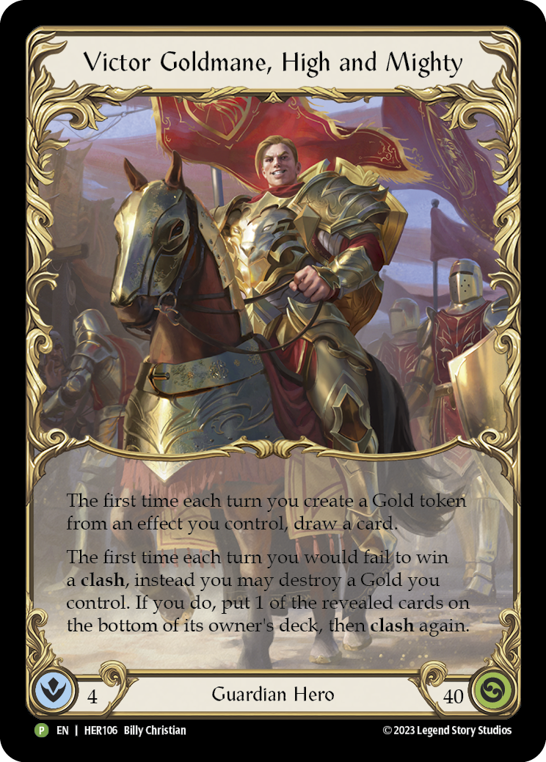
Weapons
- Miller's Grindstone (1)
- Titan's Fist (1)
Equipment
- Crown of Dominion (1)
- Civic Steps (1)
- Aurum Aegis (1)
- Nullrune Gloves (1)
- Gauntlets of Iron Will (1)
- Fyendal's Spring Tunic (1)
- Nullrune Boots (1)
- Time Skippers (1)
Loadout
- Enlightened Strike (Red) (3)
- Cartilage Crush (Red) (3)
- Buckling Blow (Blue) (3)
- Chokeslam (Blue) (3)
- Imperial Warhorn (Red) (1)
- Chokeslam (Red) (3)
- Debilitate (Blue) (3)
- Pummel (Red) (2)
- Boulder Drop (Blue) (1)
- Macho Grande (Blue) (3)
- Disable (Blue) (3)
- Cranial Crush (Blue) (3)
- Disable (Red) (2)
- Command and Conquer (Red) (3)
- Thunder Quake (Blue) (3)
- Test of Strength (Red) (3)
- The Golden Son (Yellow) (3)
- Macho Grande (Red) (2)
- Thunk (Blue) (3)
- Trounce (Red) (3)
- Rouse the Ancients (Blue) (3)
- Steadfast (Red) (3)
- Ripple Away (Blue) (3)
- Spinal Crush (Red) (3)
- Unmovable (Red) (3)
The Goldmane You Know
This Victor decklist begins with the standard inclusions that Guardians famously make use of. They are strong, after all.


True to form for a Guardian, we have a core 40-50% blues, cards that do not get sideboarded out as they make up the stable resource composition of the deck while also providing strong blocks, threatening on-hits, and neat technical inclusions. The changes in the blues always happen in deck construction for a Guardian, and basically never during sideboarding.

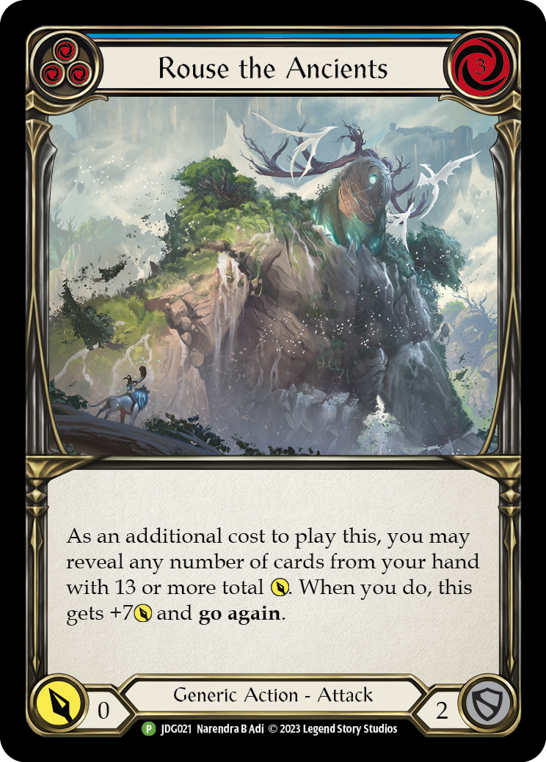
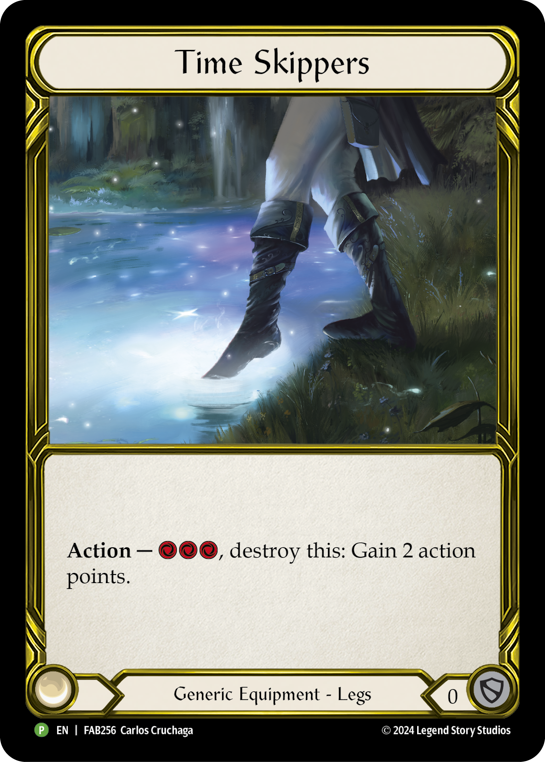
Enlightened Strike and Rouse the Ancients, alongside Time Skippers and two one-handed weapons, make up our anti-Illusionist package. Plus, since the deck is built to engage in and win clashes, there are a good number of 6+ attacks that can pop phantasms in a pinch.
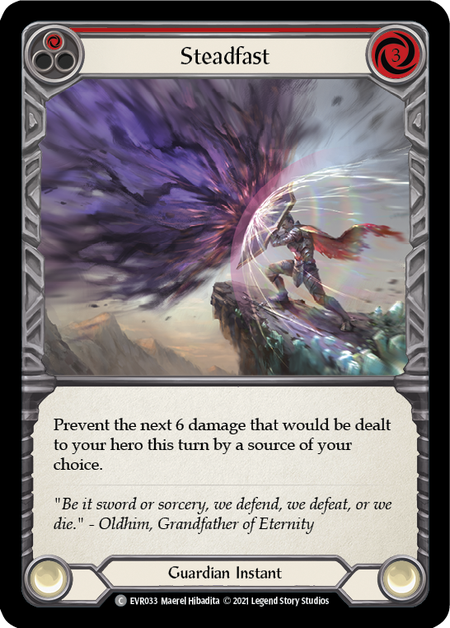
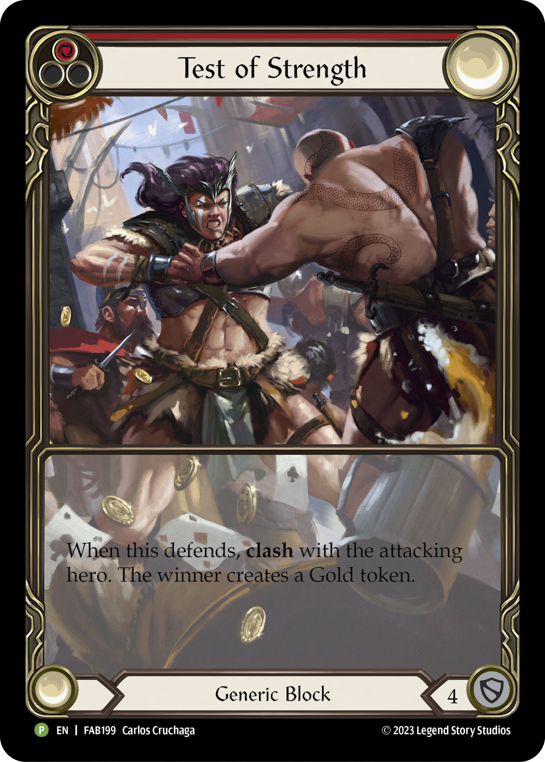
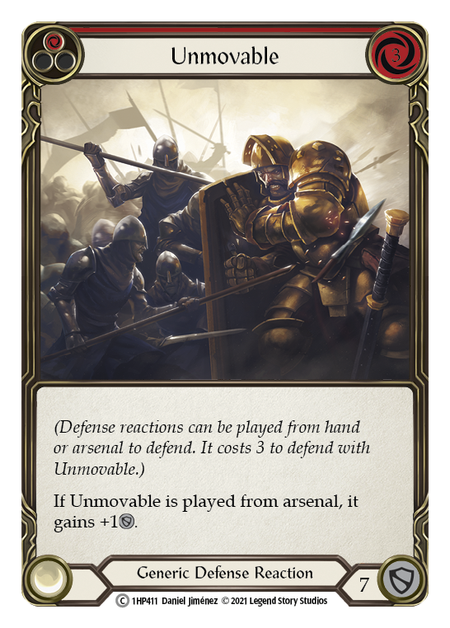
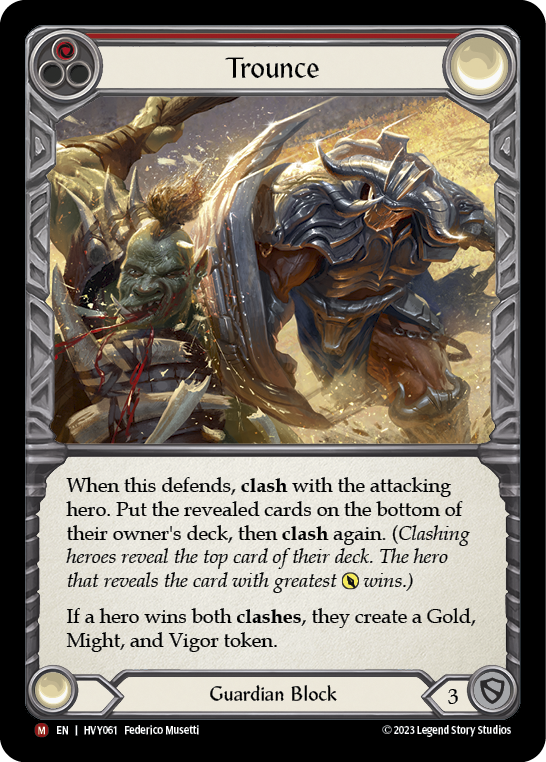
We run a defensive suite that starts with Unmovable and Steadfast, but the deck calls for Test of Strength and Trounce as a means of Gold production. These are the clashes that we want to win the most - as much as we don't want to lose potency in the hammer, we really want to make Gold and get value off of it. So we run the cards that clash for Gold, and we get a neat bonus from the tight group of yellow cards that bear our name.
(I still think that there is a Victor build out there that makes good use of yellow cards and Golden Glare, but perhaps it only exists in limited.)
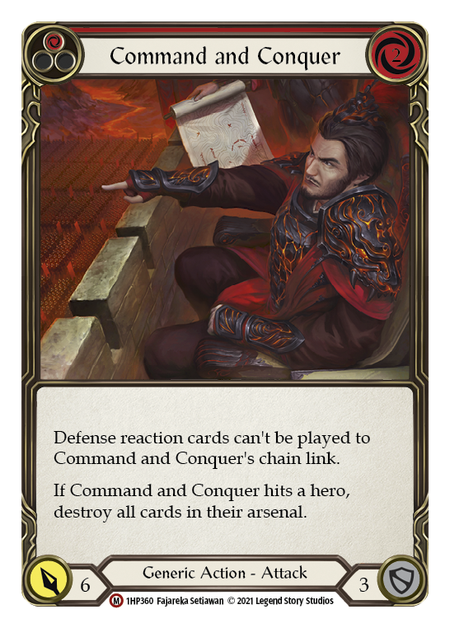

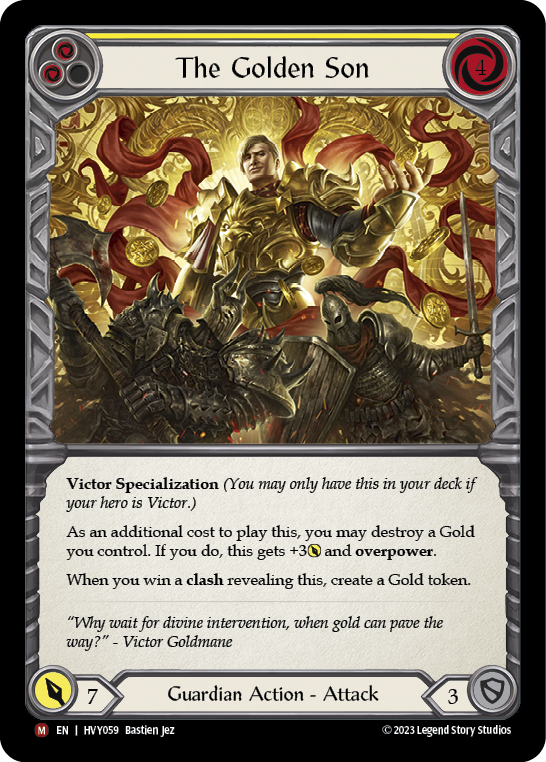
With an active Tunic, we can send Command and Conquer off of a single blue card, and then Pummel it - that's ten damage and two cards destroyed, and it's worth including this very standard trick in the deck. On top of that, the Tunic can help us play out Golden Son, which can be another ten damage if we have the gold to spend. Golden Son is the main thing that we want to spend Gold on, so be sure to save your Gold for that +3 and overpower if you can.
We have ten pieces of equipment that make up a good amount of our sideboarding decision space.
The remaining red cards are Cartilage Crush, Spinal Crush, and Macho Grande - role fillers that do damage and have relevant crush effects.


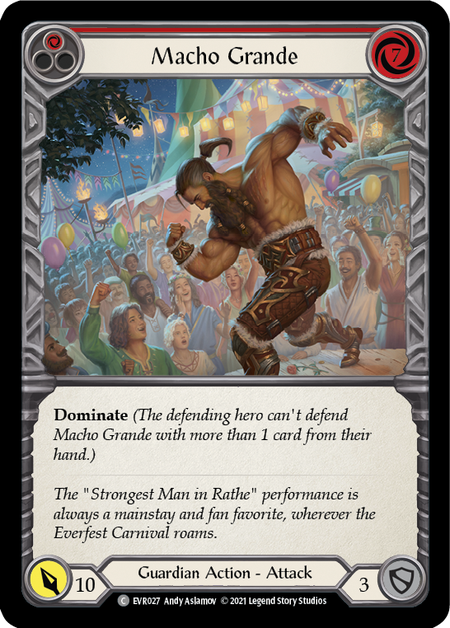
The Victor Behind the Legacy
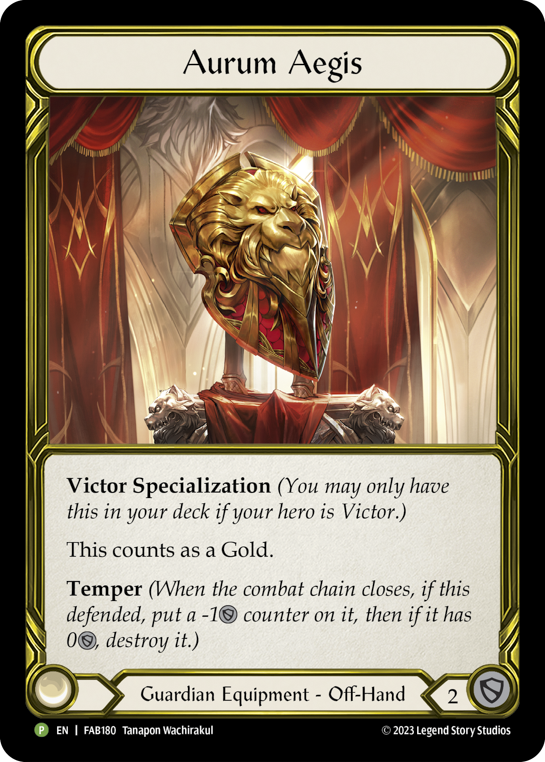
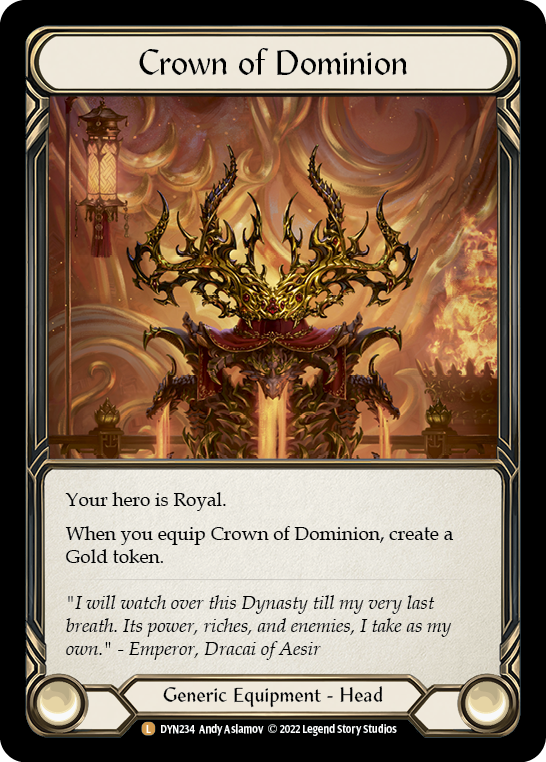
This Victor build tries to lean a little bit harder into having early Gold, and as such we run Aurum Aegis and Crown of Dominion as a part of our main package. With these two early Golds, we can activate Visit Goldmane Estate from the very first turn!
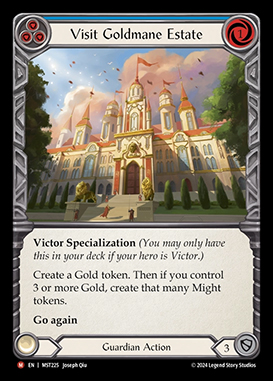
Visit costs just one resource, and gives us a gold, three (or more) Might, and has the courtesy to replace itself through Victor's core ability text. We only run two copies of Visit, however, because we really do not want to lose our clashes - the more cards we include that do not have an attack value, the worse our ability to clash is. It might not seem important at first, but clashes are how we make Gold, and Gold is typically how we close the game.
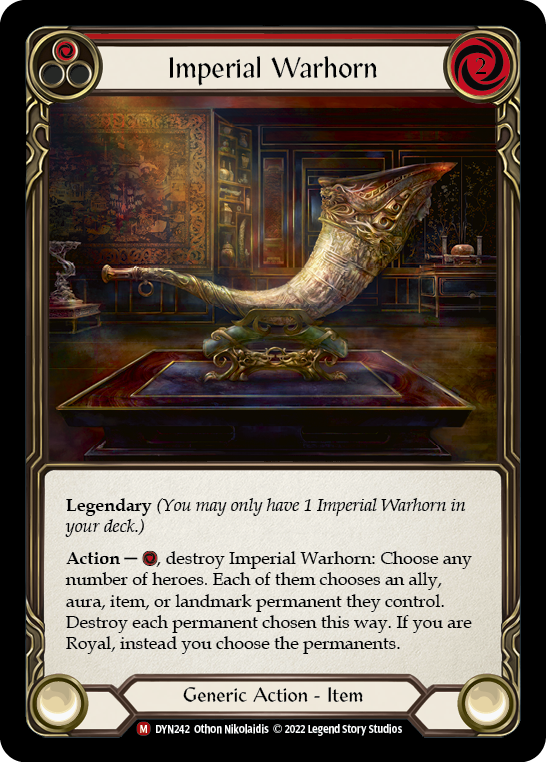

What's more, we now play Imperial Warhorn. This card can take away two of our own turns, but with Time Skippers we can play and activate it in the same turn with just it and two blues. The sudden targeted destruction of items can really mess with decks like Kano - who sometimes builds up 3 Energy Potions to try and end the game with - or Illusionists - who might be trying desperately to protect particular auras or allies. It can also take out the Library. You can even just outright obliterate the endgame of the poor, misguided Mechanologist who put their everything into an item.

One of the blue inclusions that makes this list different is Ripple Away. This card is spicy tech against Brutes, Rangers, and Illusionists alike. Ripple Away does potentially work against us, however - it will be up to you to time things such that your tokens still get made while your opponent's tokens do not. Notably, this only prevents token creation from action cards, so our clashing block cards are unaffected - but so is Apex Bonebreaker, and Kayo's core ability.
So How Do We Win?
As with any Guardian, the name of the game is value; the difference is that with Victor, we find a lot of our value on block and then convert it in to value on attack. Our defensive clashing cards give us the opportunity to both prevent damage and draw a card, turning a red defensive option into a red offensive option, or perhaps blue economy for the rest of our hand, while still performing the essential damage-preventing-duty of a blocking card. This is the conversion that is so interesting for Victor: not only is he stopping damage as a Guardian might, he is also attacking with 3+ card plays afterwards.
We have several good options for small hands: Enlightened Strike and Cartilage Crush can be effective two-card 7s, plays that allow us to block with every card in our hand, make Gold on clash, draw a blue, and then send the E-Stirke or red Cartilage Crush on the follow-up. If Tunic is live, we can even send a red Chokeslam.
We tend to close our games out with tall, evasive damage. Red and blue Macho Grande or Golden Son all have blood on their sleeves - the other attacks in the deck are largely bait, trying to get the opponent to give up cards and have smaller turns of their own. Sometimes the bait is really effective, like those floating red cards: Cartilage Crush can be disruptive to decks that are very resource-tight, Chokeslam threatens to de-intensify Brutes and Ninjas alike. If these hit, then the Machos and Golden Sons don't have to hit as hard.
Our victory, frequently, lives and dies on the resolution of those large evasive attacks. Everything else that we do in the game is in service of landing those big hits, such that we can drain our opponent of life.
Lessons Learned
It is important to always remember the number of clash misses that you have brought to the fight, and remember both if you have pitched them, blocked with them, or have yet to see them. Losing out on clashes is a difficult thing to put up with more than once, so plan accordingly. Don't make the mistake of just not checking your graveyard or forgetting how many Tests, Trounces, Visits, and Pummels have already happened.
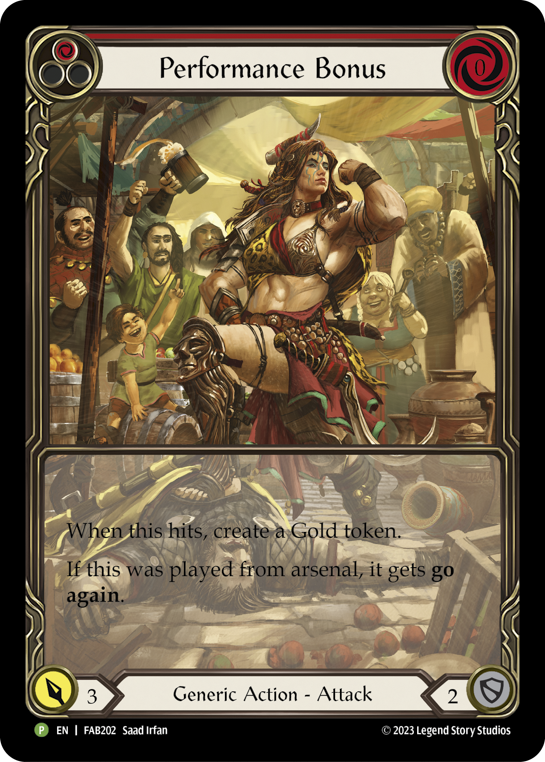
Performance Bonus was an interesting inclusion, and I often think about it over Rouse the Ancients. I have found that this is a little too low to the ground, and I would rather have the option at turns like Rouse into Golden Son. I often find victory by taking cards out of the opponent's hand, and although Performance Bonus almost always takes one card, Rouse can take two on the block - and that can be the difference maker. Let's not forget that Bonus from arsenal is still free, which means that we can block out with all 4 cards in a pinch, send back the bonus, and potentially even get a card worth arsenaling off of the hit. Ultimately, the deck needs the additional damage, and Rouse gets to stay.
As a long-time Guardian player, I almost always start with a pile of defense reactions. In Victor, I have found that these get in the way more than they strictly help. Since we are running cards like Test of Strength to block and clash for gold, we do also have to be wary of the fact that these cards do not, themselves, win any clashes. As such, the powerful zero-cost 4-block reactions just don't have a place in a list like this one.
Another testing point that my local Victor group have come across - and this one comes as quite a shock - Tear Asunder and Anothos are powerful, but they just don't push our particular gameplan very well. Anothos itself is fine, but it does occlude our off-hand, and it just feels so strong to start with the Aurum Aegis. Plus, Tear Asunder is another one of those clash-miss cards: and that immediately put it on the block for possible cutting. Notable, however, is the fact that Anothos works well with Vambrace, and if that become necessary tech then Anothos goes back in for consideration, and where Anothos goes, Tear Asunder follows.

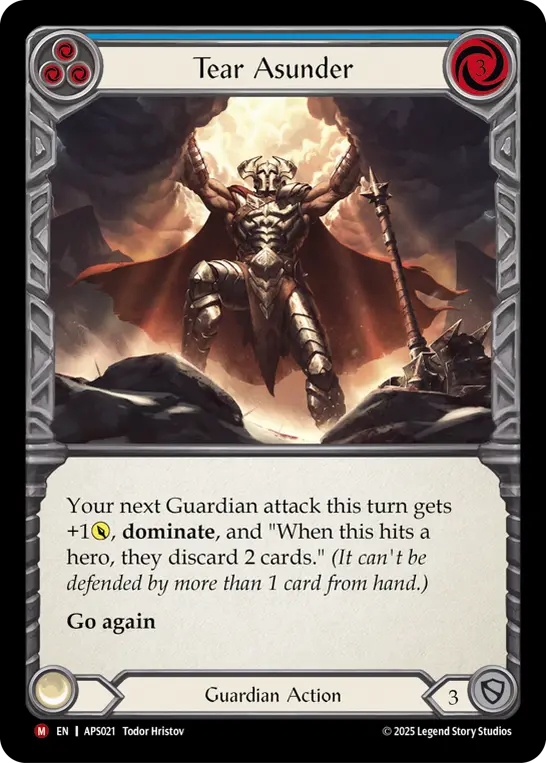
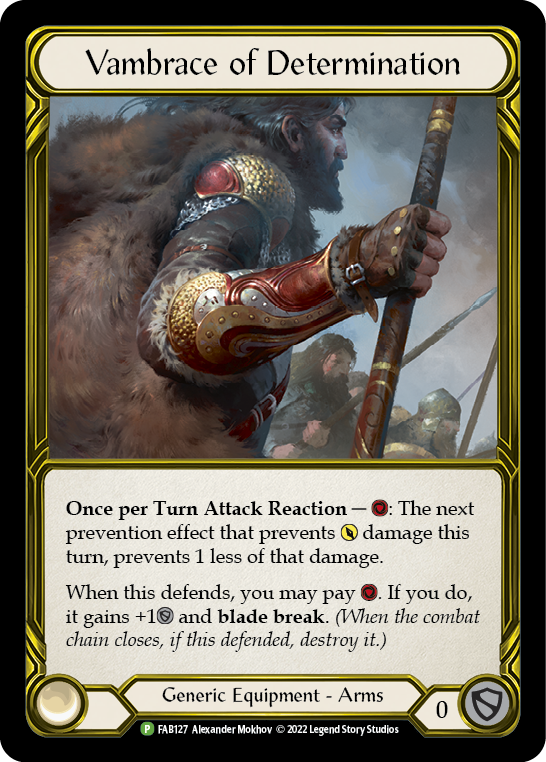
Go Forth and be Victorious
This guide has given you a lot of tools, including a powerful decklist that has been combat tested and insight on how the deck can change shape to better suit your needs. Victor is a strong hero that enjoys a different matchup spread than the other Guardians, and as such deserves some space in your deckbox.




